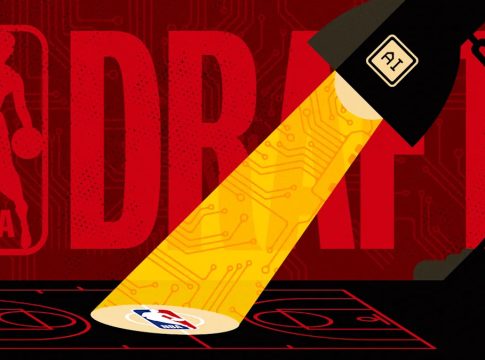The Unlikely Ascension of AI in the NBA: From Physics to Player Statistics
A Journey from Micro to Macro
In an intriguing twist of fate, Gregory Peim transitioned from probing the universe’s fundamental laws at a high-energy particle accelerator to unlocking basketball strategies with the Los Angeles Clippers. After earning acclaim as a theoretical physicist at Northeastern University—publishing 13 influential research papers in three years—Peim made the unconventional leap into basketball analytics over the past decade.
The NBA’s Data-Driven Revolution
Peim’s move reflects a broader trend in the NBA, where teams have begun to invest heavily in analytics to gain even marginal competitive advantages. The modern NBA is characterized by a diverse array of professionals—from Wall Street analysts to software engineers—all harnessing data to improve performance. NBA franchises are now casting a wide net for tech-savvy talent; a notable example includes the Toronto Raptors hiring an aerospace engineer to analyze player movement in relation to computational fluid dynamics.
Why Analytics Matter
As basketball analytics evolve, their influence on game strategy and player development continues to grow. This burgeoning emphasis on data has transformed how teams evaluate players, design in-game strategies, and even prepare for opponent matchups. However, the increasing secrecy surrounding these analytics practices raises questions about transparency in a league that thrives on competitive advantage.
The Tools of Transformation
At the heart of this transformation is the integration of innovative technologies like player-tracking systems, notably SportVU and, more recently, Hawk-Eye Innovations. These advanced systems utilize high-resolution cameras to capture precise player and ball movements, gathering vast amounts of data that can be analyzed in real-time.
Second Spectrum, another company innovating in this space, has developed algorithms to decipher complex basketball actions, enabling teams to quantify which defensive strategies work best against specific players or plays. This level of analysis was unimaginable just a few years ago and offers teams a significant edge in both strategy and player performance assessment.
Future Prospects: A Data-Driven Draft
As the analytics revolution continues, the NBA is also evolving its draft strategies. Recent studies by quantitative economists are proposing methods for more accurately predicting player performance based on college stats, physical attributes, and historical comparisons. However, the unpredictability of the draft remains a challenge, with many executives likening it to a "crapshoot."
To further enhance this analytical framework, upcoming advancements in biomechanics and motion capture are set to provide insights into optimal player performance. As teams leverage AI and advanced analytics to refine player evaluations, the conversation around data utilization will only intensify.
Conclusion: The Game Changes, but the Secrets Stay Hidden
The increasing reliance on analytics is reshaping the landscape of professional basketball. However, the competitive nature of the sport means that teams remain secretive about their methodologies, often declining to share insights publicly. As institutions like Second Spectrum continue to push the boundaries of what’s possible with data, the ongoing evolution of basketball analytics represents not just a methodological shift but a new frontier in sports management.
The marriage of technology and basketball is just beginning; as Peim and his contemporaries pave the way, we can anticipate an increasingly data-driven approach forever changing how the game is played, evaluated, and enjoyed.

Writes about personal finance, side hustles, gadgets, and tech innovation.
Bio: Priya specializes in making complex financial and tech topics easy to digest, with experience in fintech and consumer reviews.

